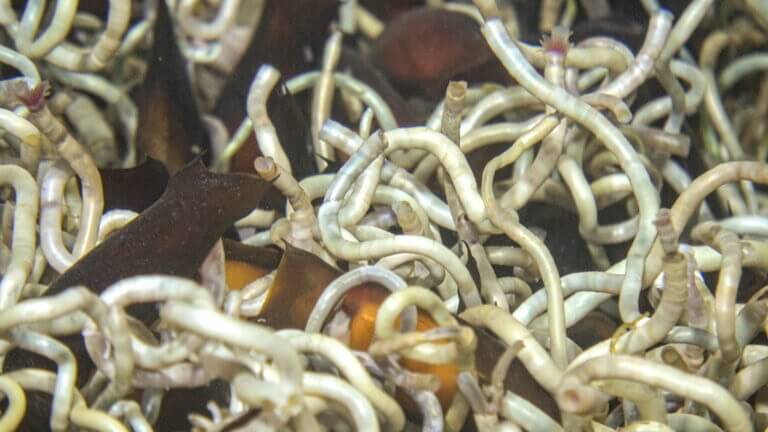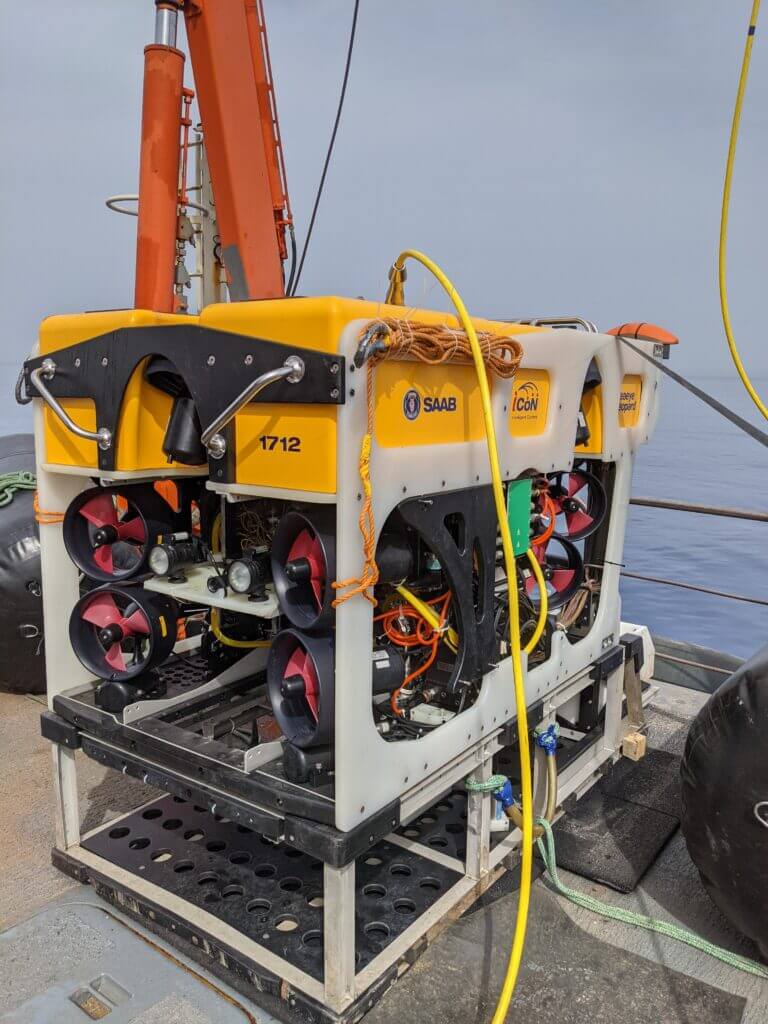A research robot discovered a colorful abundance of life at a depth of a kilometer in the sea * Researchers examined how a unique and abundant environment was created, in the depths of the sea, off the coast of Israel

An underwater robot dived to a depth of 1,150 meters off the coast of southern Israel and discovered an environment teeming with unique life, including deep-sea sharks that lay thousands of eggs. The robot's cameras revealed underwater springs and salt lakes, that is, water whose salinity is much higher than the surrounding seawater. Special bacteria live in this water, which produce energy from compounds originating from the soil - mainly natural gas and hydrogen sulfide. Along with extensive mats of these bacteria, the cameras also discovered reefs of worms that produce energy from the same compounds and other unique animals. The unique environment also attracts sharks, who use it as a breeding site and lay their eggs there.
"This super-saline environment, rich in sulfur compounds and methane, is toxic to most living things, but for these particular creatures it is paradise," says Dr. Maxim Rubin-Bloom from the Sea and Lake Research Institute in Haifa. "This discovery changes what we know about life in the deep sea off the coast of Israel." An underwater robot of the University of Haifa and the Mediterranean Research Center, capable of carrying out research work at a depth of more than 1,000 meters.
This toxic piece of paradise was discovered by Dr. Rubin-Bloom as part of a study of the seabed, which was done jointly with geophysicist Dr. Yitzhak Makovski from the School of Marine Sciences at Haifa University and with geochemist Dr. Gilad Antler from Ben-Gurion University of the Negev and the International Institute University in Eilat.
Dr. Makowski and Dr. Rubin-Bloom mapped the seabed using sonar (technology based on sound waves) carried on a small unmanned submarine. Most of the sea floor is flat; while in this area a crater was discovered, which promised interesting findings.

The biological research was carried out using the underwater robot. His cameras discovered richness that is not typical of the seabed. As Dr. Rubin-Bloom surmised, in the crater there is a kind of underwater "lake" of salty water, whose high density prevents it from mixing with the seawater above. The super-salty water is also murkier, and in the videos you can see fish diving into the murky water and disappearing, then coming back up and out into the clearer water above.
The dizzying abundance of life in the environment that was discovered is largely based on bacteria that feed on chemical compounds that arise from the soil - such as sulfides and methane. These bacteria are called chemosynthetic bacteria. A variety of animals, such as oysters and worms, also benefit from the unique biochemical abilities of the bacteria. The worms and oysters allow these bacteria to live inside their bodies, and enjoy the energy they produce and provide them. If we wander at random in areas where natural gas springs, here and there we will find a colony of worms or oysters; But in the rich environment that has now been discovered, you can see reefs and layers of hundreds of thousands of individuals.
If we wander at random in areas where natural gas springs, here and there we will find a colony of worms or oysters; But in the rich environment that has now been discovered, you can see reefs and layers of hundreds of thousands of individuals.
In addition to bacteria, oysters and worms, sharks also live in this environment. Their connection to the chemosynthetic story is probably indirect - they come to the place to reproduce, in a scope and density that have not been seen before on the shores of Israel or on the shores of neighboring countries. It is possible that the sharks are attracted to the place due to the abundance of food - oysters and worms - that is available to the young sharks. It is also possible that they are attracted to the salt lakes - sharks apparently prefer to breed in particularly salty areas. Shark eggs among worms of the genus Lamellibrachia, near the salt ponds.
The underwater robot not only photographed this environment, which thrives at a depth of more than a kilometer below the surface of the sea, but also collected water samples from it in sterile bottles. Not all the bacteria in the samples succeed in growing in the laboratory, due to the difficulty of reproducing for them the conditions prevailing in their natural environment; In fact, the researchers assume that most bacteria from the sea fail to grow in the lab. Therefore, Dr. Rubin-Bloom and his group do not grow the bacteria, but test their genetic material - mainly DNA and sometimes also RNA, which is more difficult to produce without it breaking down. The researchers also collected mud samples from the bottom near the salt flat, and measured a very high concentration of hydrogen sulfide in them. Unlike bacteria, which thrive on this compound, from our point of view it is so toxic that the researchers can only treat these samples using a fume hood - a device where the tested samples are behind a glass partition, and constant ventilation removes the dangerous vapors.
"The new findings fascinate us in every respect - the richness and density of this environment, the combination of chemosynthetic life and the 'baby house' of the sharks, and the colorfulness and abundance revealed by the videos and photos we took with the help of the robot," says Dr. Robin-Bloom. "We hope that this unique environment will survive for a long time, despite the damage caused by pollution, fishing and the search for natural gas sources in the area. This unique discovery will feed many follow-up studies."
Life itself:
Maxim Robin-Bloom
Dr. Maxim Rubin-Bloom is not satisfied with the photographs that his robot brings with him, and is himself a diver and even a diving instructor.
